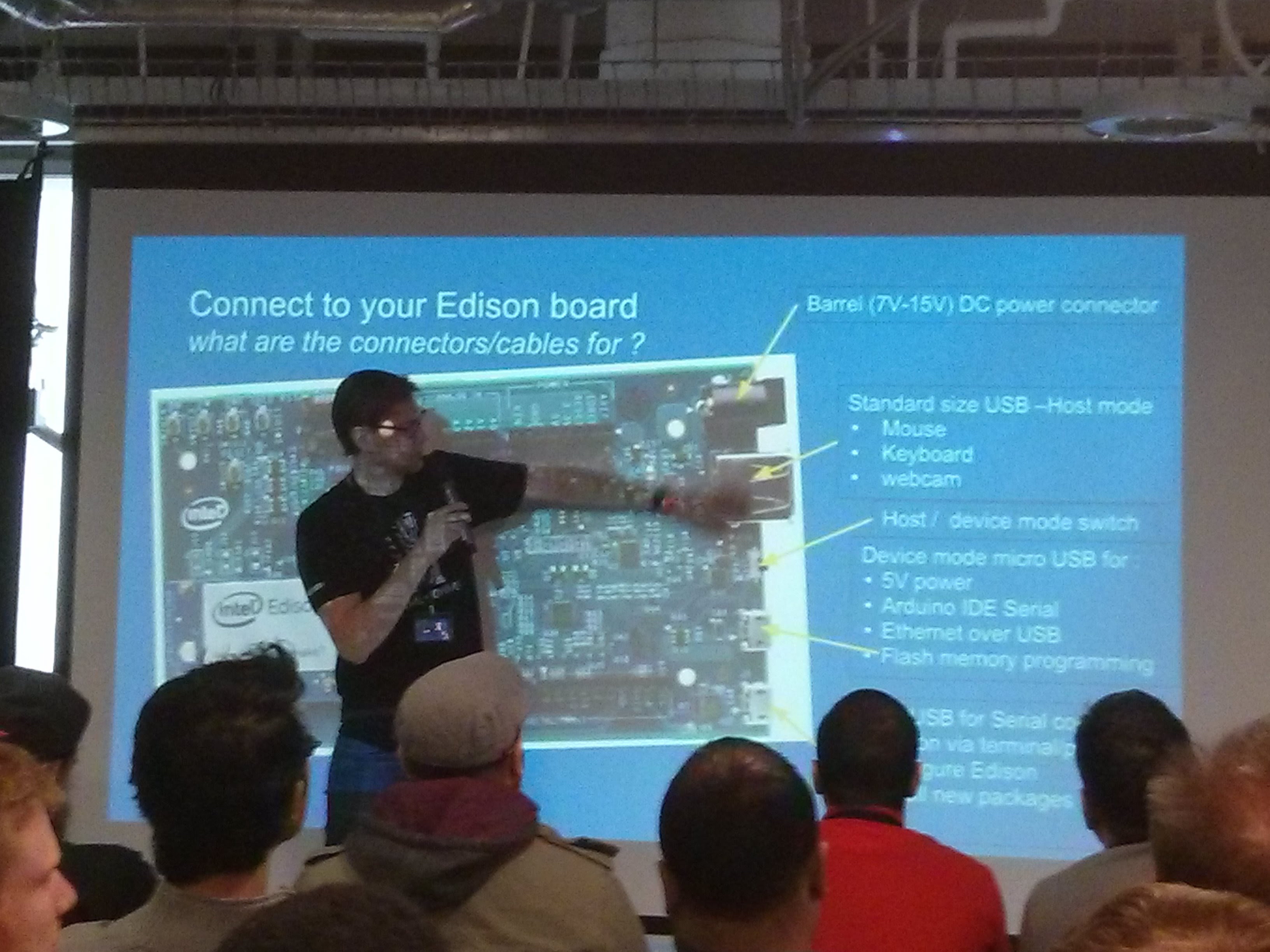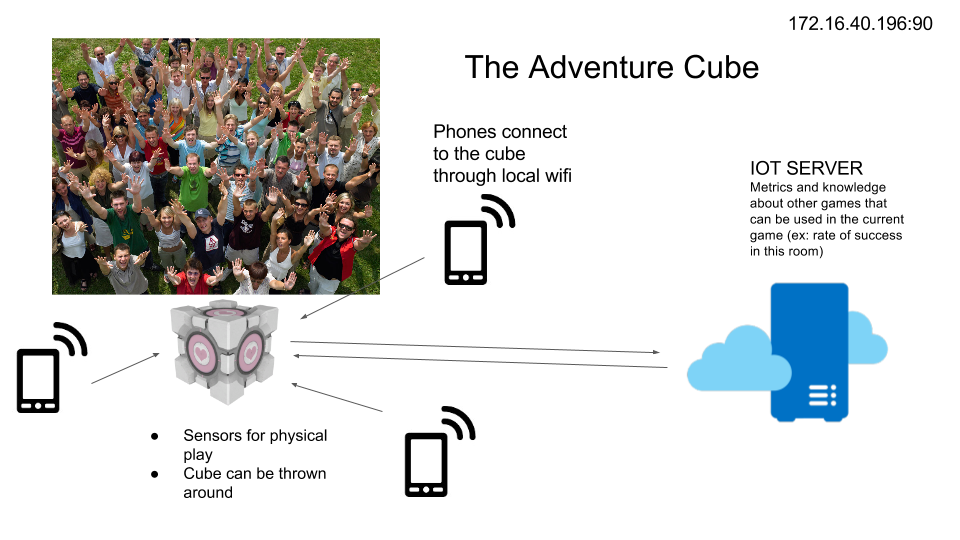The Adventure Cube – Intel IoT Roadshow – 2nd Prize
 In the past 4th May I participated in a cool hackathon even created by Intel. The objective was to create something in 2 days using their Intel Edison hardware.
In the past 4th May I participated in a cool hackathon even created by Intel. The objective was to create something in 2 days using their Intel Edison hardware.
This hardware is intended to be used in embed applications and it’s very versatile.
I found my friend there, Robin Baumgarten, and we joined as a team which obviously lead us to creating a game.
The Project
“The adventure” cube was our experimentation on how to engage a crowd or audience into playing a game together. We know there are several other ways of doing this which were already explored (like Kahoot where you have a central screen with questions and everyone who wants to play connects to the website with their phone and use a code to select which game to join). But in this case we wanted to explore how the game could be played by having something physical with which people could interact with. We still use phones as a base for the experience but this time the phone is used as a tool that interacts almost physically with the “Adventure cube” itself.
 How it worked
How it worked
The AC (Adventure cube) is thrown into the audience and someone keeps it. Everyone connects to it using their phones which will show them the initial screen. From that point everyone reads the current state of the game (which can also be read outload by the person holding the cube). At that point a challenge is called out by the game which needs to be completed in order for the game to continue.
The ways the challenges work can be so many! In our case we created 2 main examples: shaking the box or put the correct phone’s screen close to the light sensor.
The shaking can be a small fun excuse for some movement. We might say something like “There’s a door in front of you. It’s seems to be easy to open. Maybe if you shake it a little bit!”.
For the light sensor we had it show 3 different kinds of weapons randomly in the crowd. Each weapon was shown as a different image and a flashing light with different frequencies on the phone’s screen. The frequency of the light was used to communicate to the light sensor which weapon the player was “holding”. Then the story said something like “There’s a dragon in the cave. They’re known to be killed by steel blade weapons”. And a person with such a weapon would now hold the cube and use he’s phone to activate the weapon.
Possible applications
There’s so many possible applications from marketing stunts to engaging audiences in conferences. But the one closest to heart is, without doubt, education. The “Adventure cube” could be used to engage students into discussions. The story doesn’t have to be right or wrong. It could raise interesting questions to be discussed in class and as a group.
This is definitely a project worth to explore a bit more.
You can download our slides here.
